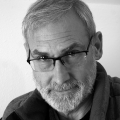Remembrance and taxation without representation
2nd of a series on a Trip to Washington DC.

One of my grandsons practiced taking night photos at the National Mall’s Second World War Memorial. Composed of 56 plinths representing the states and territories whose veterans fought in the war the memorial’s brightly lit marble is more magical at night.
“Honor flights” are working hard to fly the “greatest generations” veterans to see the memorial that marks their service before it's too late.
My father, once a young sailor, died 17 years before its 2004 dedication. When I was a child there was no rush to remember a war that still seemed like yesterday. I watched it fought on television's Combat and Rat Patrol and watched historical footage of it on CBS’s The Twentieth Century with my Dad.
As its survivors began dying off one man made it his mission to keep its memory alive, Bob Dole. The Kansas Senator had lost the use of an arm in the war. He also lost a 1980 race for Vice President and one for President in 1996.
In the 1980 election Dole infamously blamed all American wars on Democrats. He outraged a lot of Democratic veterans and I’ve always blamed him for causing President Gerald Ford’s defeat. Yet Dole was simply repeating what my own grandfather, a fellow Kansan, had told me adding “don’t ever vote for a Democrat.”
History can play practical jokes.
We visited many places of remembrance with our grandsons. We wandered under flowering trees by the Pentagon’s 9-11 memorial. From there we took the metro to Arlington National Cemetery. Once Robert E Lee’s plantation it was confiscated and sown with the graves of the Civil War’s dead. We watched the jaw droppingly precise changing of the guard which has been repeated every hour (or half hour in summers) by the Army’s 3rd Infantry since 1925.
Two more tombs have been added since I first witnessed it in 1962, those for Korea and Vietnam. However, because of the magic of DNA, Vietnam’s unknown was identified and returned to his family. The now empty tomb may be guarded into infinity.
We Duluthians could only take half days of Washington’s August heat. We were grateful that the National Park Service provides a train of coaches to ramble over Arlington’s rollings hills.
I appreciated DC’s defiant rebuke to the nation on the tour car’s licence plates. They read: “Taxation without representation.” An accusation originally directed at King George DC now aims it at the Congress that levies taxes on the city’s residents. They have no vote in Congress.
When George Washington first pictured Mt. Vernon’s land for the capitol city no one envisioned a metropolis. In its first decades the President’s namesake was largely malarial and empty. It was a place fit only for the the slaves of adjoining plantations who were laying out the impossibly grand avenues designed by Pierre L’Enfante. The French Architect planned a capitol fit for the scrappy new nation. It would match the scale of ancient Rome and be built by slaves.
Nourished on the thin gruel of Christianity slaves bided their time until a Civil War made it necessary for Lincoln to enlist 300,000 of them into union blue.
Our reluctance to hop off the tour cars on a hot day meant we would have to come back to see one Arlington Landmark later in the week - the Marine Corps Memorial. We caught it on an evening “light” tour.
I was struck by Washington at night on my first day as a Summer intern in 1971. As the Congressman’s legislative assistant drove me to my first night’s lodging he pointed out City sights. I only had eyes for the astonishingly pink clouds overhead that reflected back the sodium vapor lights of that Era. They have since been retired.
Whiter replacements now show on the bronze casting of six Marines raising Old Glory over Mt. Suribachi in the battle of Iwo Jima. The winter before our visit I had approximated a version of it in snow from the GI jamming the flag staff into the ground to the last soldier, Ira Hayes, who’s hands are just releasing their grip of the pole for the flag’s ascent. Hayes, a Pima Indian, is a reminder that the most American population, the one that surrendered its land under duress to overwhelming odds, has nonetheless remained true to the land in times of war. Native Americans like everyone laid to rest in Arlington Cemetery have fought for liberties which many of us take casually and which are sometimes only casually enforced. The night tour focused on the wars they fought.
We walked past 70,000 names of Vietnam’s fallen carved into black stone on a path facing the Washington Memorial’s brightly lit obelisk. We turned to the bronze soldiers warily walking the Korean battle ground.
Our frank and grizzled tour guide told us he disagreed vehemently with visitors who told him that America had lost that war. “Look at South Korea,” he told us. Their freedom today was the victory.
A grateful Korea has added to the memorial since I last saw it. Their addition expresses thanks not just to the 36,000 American battle dead but to the million United Nations troops who died or were wounded in securing Korean freedom. Americans who think we shoulder every burden by ourselves should think again. Harry’s reflections will continue until he runs out of words. But he has a lot of words.
